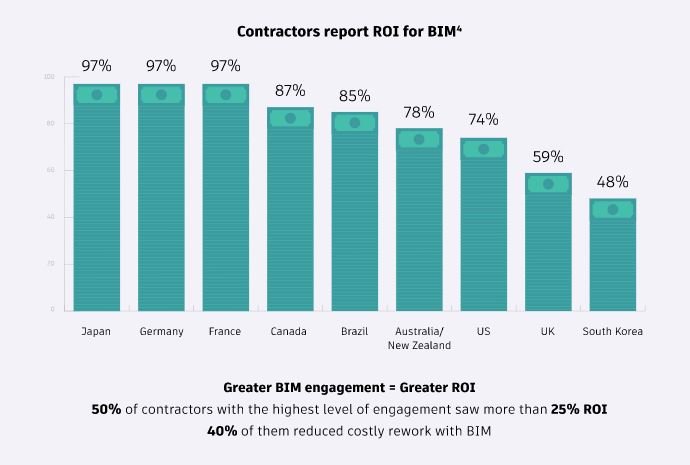Using BIM software has been adopted by the majority of the developed nations and this has happened for many reasons.
- BIM software allows you to see the virtual building in 3D
- 3D modelling ensures clash detection and building faults are prevented before the building process begins
- Photo realistic renderings of buildings and spaces allows the end user to visualise the space, market the building and even sell prior to construction
- BIM software cuts down the time taken to perform tasks that would take a manual user a considerable period of time
- The software usually comes with databases that have made the manual scheduling of items redundant
- Information is at your fingertips, areas, volumes, sun studies, energy calculations etc
- Actual models from manufacturers ensures that modelling is accurate, and scheduling is automatic
- Etc…
I could go on with many more reasons why, but I am also assuming that you have already embraced the power of BIM software and are aware of the benefits. How do I know this? By 2021, BIM will have been adopted by 90% of professionals in the industry according to Autodesk, the worlds leading Architectural software manufacturer. They state that uptake of their software is driven by:
- Increased productivity and efficiency
- Improved project outcomes
- Reduced cost and risk
- Better collaboration and coordination; and
- Reduced rework
(www.autodesk.com/redshift/bim-2020)
They also note that in their investigations they find that Users experience a 50% productivity gain over the time they use BIM. If I read that right, over time, we become twice as fast at our work? Even better, they reckon that close to 20% of users experience a productivity gain of more than 100%. OK, seriously….where do i sign!

(www.autodesk.com/redshift/bim-2020)
Governments around the world have (to varying degrees) mandated the implementation of BIM. They recognise the value of using these tools to ensure better economy and reduce wastage through reworks and on-site work arounds.
Customers are becoming used to the world of BIM without even realising it. A designer who doesn’t provide a 3D image of the building as part of a drawing set, might be considered to be behind the game, regardless of their skills.
The year 2021 is fast approaching and if you haven’t adopted BIM in your practice, then you might want to consider moving towards it. If you do decide to take the leap into Autodesk Revit, there are various tools available to speed up your adoption of this complex software. Out of the box, applying Revit will fill your days with frustration and render your nights without sleep. However, if you were to subscribe to QARC Systems, QARC4Revit, you will hit the ground running, no sleep lost and immediately productive from the get go.
QARC Systems: www.qarcsystems.com.au



